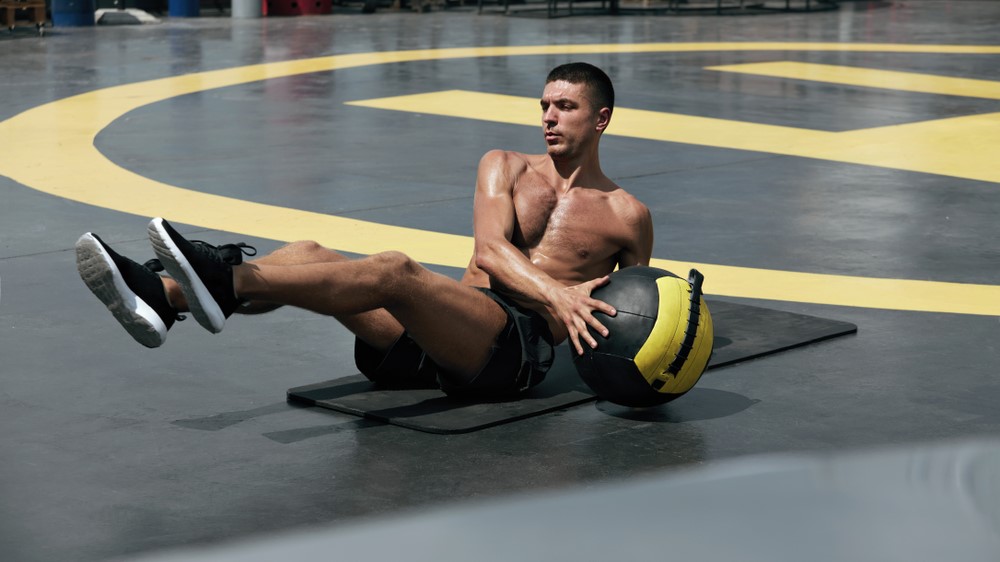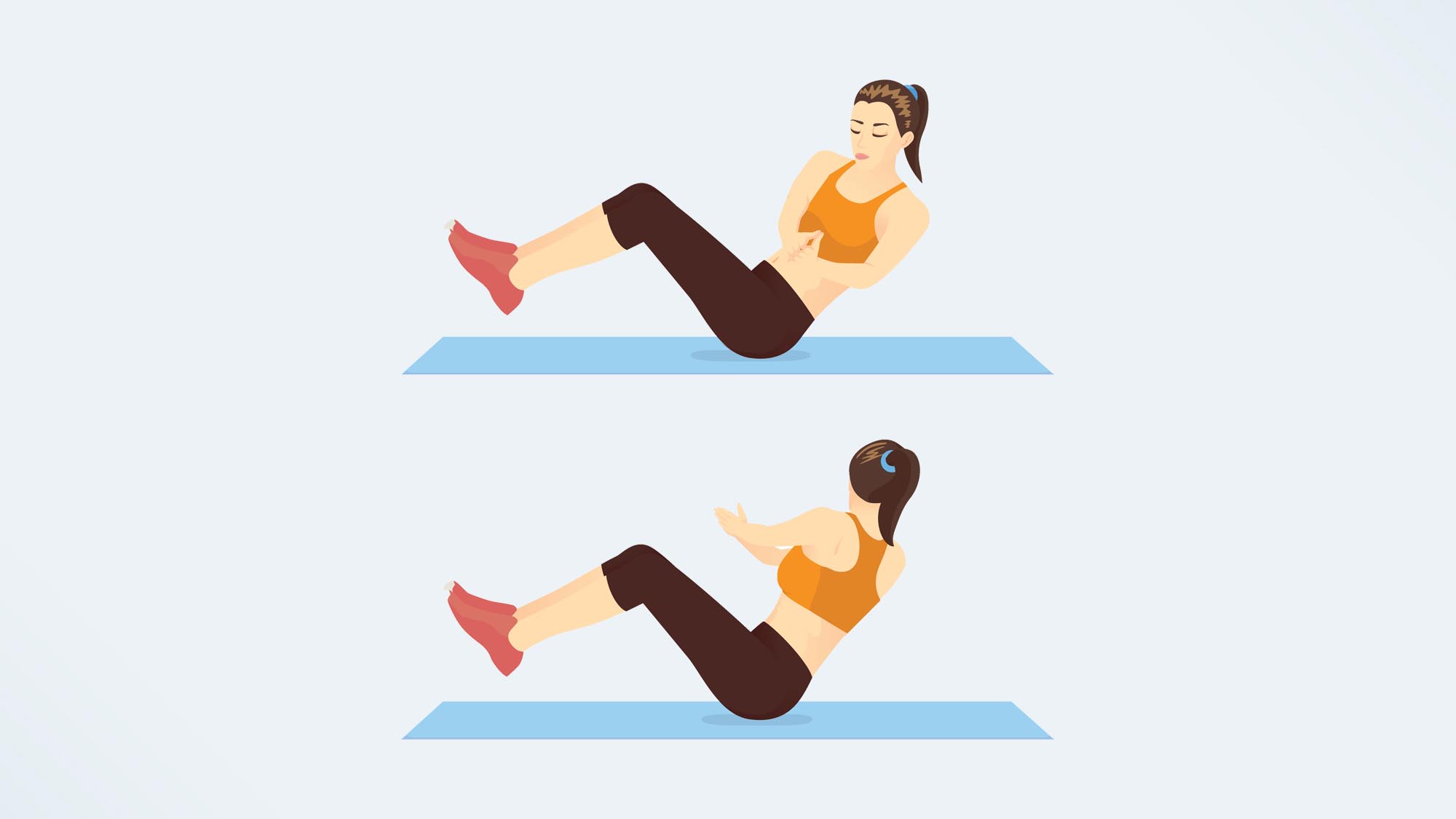I did 50 Russian twists every day for a week — here’s what happened
This intense core move has been around for a long time, and there’s a reason for that

The Russian twist is a dynamic exercise that works all the muscles of your core and is especially good for targeting the obliques (the muscles on the side of the core) and the deep core (transverse abdominis). All the exercises in this series of week-long challenges call for good form to get the most benefit, but with this one, it’s crucial to set yourself correctly, maintain your position and not move too quickly — do this and you will reap the greatest rewards. You will also feel a serious burn but in a good way.
It's an adaptable move, so if you want you can bring your legs and hips to the workout party. They won’t thank you, initially, but eventually, they will see the light. You can do it with or without weight (check out the best adjustable dumbbells for working out at home here) or medicine ball, depending on your existing core strength. If you are a beginner, take care and start with no weight. If you have lower back weakness, it’s best to avoid this exercise until you have built up strength in that area with moves such as the superman (here's what happened when I did the superman exercise for a week), which put less stress on the lumbar area; as well as other exercises such as the bird dog (here's how to do a bird dog, and what happened when I did bird dogs every day for a week) and the plank, and its variations.
The name? It is commonly believed that it was developed in the former Soviet Union during the Cold War, but other sources say it was used by British soldiers in the 19th century. In short, no one knows. Or, probably, cares.
How do you do a Russian twist?
Start off by sitting down on the floor (use a yoga mat if you wish), legs out straight. Brace you core, lean back slightly, and raise your legs a few inches off the floor, bending your knees a little, so your torso and upper legs form a V shape. Either cross your feet or keep them side by side, whichever feels better. You can make this move slightly easier by keeping your feet on the ground. Balancing in this position, and with your hands lightly touching (or holding the weight/ball), twist from side to side.
Be sure to rotate properly, moving your upper back and shoulders, not just your core. But don’t twist your lower back. Maintain a straight spine and, if raising your legs, try to keep them stationary, or you will lose some of the torso rotation that makes this move so effective. Look straight ahead, which will help you maintain form. Aim for three sets of 10 to start.
If Russian Twists are hurting your back, you might be doing them wrong. Read more about how to do a Russian Twist with the best form here.

I did Russian twists every day for a week, and this is what happened
Full disclosure: I love this exercise, because of the movement involved (rather than, say, a plank, which is about holding a position) and the instant sense that your body is working hard. I had not done it for a while, so, as usual, I used day one to check my form. It was OK, but I noticed my legs tilting slightly from side to side, which I knew I had to correct. I also felt I was doing the move a little too quickly, perhaps to try to limit this leg movement. I did 50 with a 4lb medicine ball and felt fine. It’s a terrifically energizing and satisfying move.
Sign up to get the BEST of Tom's Guide direct to your inbox.
Get instant access to breaking news, the hottest reviews, great deals and helpful tips.
On day two, I watched for leg movement. I tried it first with my legs side by side and then with my ankles crossed, which made it easier to keep my legs steady. I also slowed down the movement, which forced me to think more about form and, for sure, made me work harder. Don’t rush this one. Momentum can make you think you’re getting the most from the move, but it just means you’re spending less time with your core under tension.
On day three I decided to try a variation on the basic move, by drawing my left knee up towards my right elbow as I twisted left, returning to the start position, then drawing my right knee to my left elbow as I rotated right. This is murder. I managed 30 and was out of breath by the end, and my entire core wanted to know what it had done to deserve such treatment. Honestly, I was hoping my dog would pad into the room and give me that look of his that says: This has to stop. The floor is mine. You know and I know it.
On days four and five, I added another variation: rotating left, rotating right, then bringing both knees towards my chest. I found this worked my lower core work harder than before, especially when I concentrated on keeping my thighs together — they were inclined to drift apart to make things easier on me. Hitting 50 was tough going, but I was enjoying the daily effort and sense of accomplishment.
For the final two days, I returned to the basic move but slowed things even further and paused at the end of each rotation. Once you have mastered the form, try this. You’ll be amazed how much extra work and concentration are required when you focus on each aspect: straight back, steady legs, engaged abdominals, maintaining V position. This move can almost be meditative, aside from the tortured breathing and wailing abs.
The Russian twist is probably my favorite core exercise and the week-long challenge reminded me not only of its effectiveness but also of the immediate sense of achievement (you will feel this one instantly) and the variety it offers. It is not an easy move, but if you start off with no weights and your legs on the ground, you will soon have the strength and confidence to move to the next stage. Believe me, this one is a winner.
Next: We asked Peloton if you can do the Peloton rowing workouts on your own rowing machine — here's what they said. Also check out what happened when I did 50 sumo squats every day for a week.
John is a writer and editor based in London. He was worked for magazines such as Runner’s World, Men’s Health, Women’s Health and Cosmopolitan. A keen runner, what he lacks in ability he makes up for with enthusiasm and excuses.

